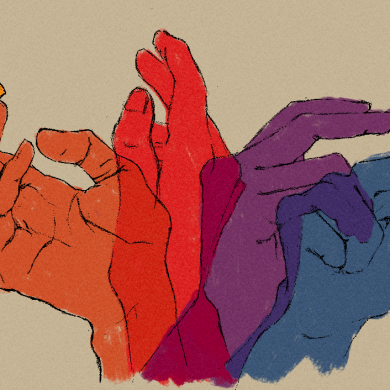An impending environmental issue is stirring in every hospital globally: harmful bacteria is becoming immune to modern antibacterial technology. In order to resolve this issue, digging further into present day technology might not be the answer. Instead, we need to go back in time to the Ancient Egyptians, Greeks and Aztecs. The answer to this problem is not in the present, but the past.
In the United States, over 700,000 people every year contract hospital acquired infections (HAI), with 75,000 deaths attributed to it. 1 There are many types of HAIs ranging from urinary tract infections to surgical site infections. Many types are difficult to attack with antibiotics, as antibiotic resistance increases. HAI’s occur by unsanitary actions, such as a staff member going from patient to patient without properly disinfecting themselves and touching a door knob. This harmful bacteria, known as gram-negative bacteria, usually only harms patients with low immune systems. Gram-negative bacteria is a main factor in the cause of infection. They are resistant to multiple antibiotics, and increasingly resistant across a larger range of drugs. The CDC states in their article, “These bacteria have built-in abilities to find new ways to be resistant and can pass along genetic materials that allow other bacteria to become drug-resistant as well.2” Furthermore, they can survive for a long time on surfaces in the hospital and enter the body through wounds, catheters, and ventilators. Hand washing and gloves help minimize the chance of infection but it is not enough.
How do we win a war with a pathogen that has become immune to our weapons? Do we develop more treatments that the bacteria will eventually resist? Glimpsing back in time to find the solution, opened a realm of evidence in which patients were being treated with copper hundreds of years ago. Hippocrates, most commonly recognized in context of the Hippocratic Oath, was a Greek physician, considered to be the father of early medicine. Hippocrates himself used copper to prevent infection in fresh wounds. Another example of copper’s early medicinal roots is intertwined with the Aztec culture. In the mid 1500s, it has been recorded that mixtures of copper were used to soothe sore throats. Lastly Ancient Egyptians, well-known for their preservation of mummies, used copper to sterilize chest wounds, burns and irritation of the skin. “…[T]hese natural copper complexes expedite the relief of stress and the repair of tissues… [and]… have medicinal capabilities that are fundamental to the healing process itself.”3
Today, scientists believe copper’s anti-microbial properties work by puncturing the cell membrane of the harmful bacteria. Then, “there is an unopposed stream of copper ions entering the cell. This puts several vital processes inside the cell in danger.” 4 The bacteria then dies. Thus, without the use of crude chemicals and huge investments in research, copper and its antimicrobial properties present an easy solution to a difficult circumstance.
Copper was one of the first metals to be used by man. In modern technology, the first response to a given conflict is to pursue advanced technology requiring vast amounts of money. However, not all problems can be solved by marching forward. In society, it has been driven into our heads to not turn back. To keep going forward. However, going backwards opens up the pathway forward. Today, copper can be used in hospitals in high-contact areas such as door knobs and light switches to decrease the amount of bacteria spread to people. Hospitals around the world are considering or actively using copper to “help reduce deadly infection.”5 Copper can control these microbes without the use of harsh chemicals, as it is amiable to the environment. Besides the action occurring at a microscopic level, copper has an aesthetic value to the eye as well.
April Oertle is a resident of San Diego and is currently a Junior at Serra High School. Her inspiration for her essay on combating infections in the hospital by using naturally-occurring copper instead of medication was inspired by her time volunteering at the Scripps Memorial Hospital and an article that she had read in the newspaper about the topic.
She is extremely interested in pursuing medicine as a career, and would like to focus on emergency medicine or neurosurgery. April has founded the Pre-Medical Club on her high school campus and has completed two summer internships at the University of Alaska and the Johns Hopkins Summer Program, which have all helped her learn about medicine first-hand.
Aside from being an aspiring doctor, April enjoys her AP Psychology in school and her hobbies include playing and coaching soccer. She is also a budding artist who enjoys painting landscape art.
References
1 Center of Disease Control and Prevention, www.cdc.gov/HAI/surveillance
2 “Gram-negative Bacteria Infections in Healthcare Settings.” Centers for Disease Control and Prevention. Centers for Disease Control and Prevention, 16 Jan. 2011. www.cdc.gov/HAI/organisms/gram-negative-bacteria.html
3 “Medical Uses of Copper in Antiquity.” Innovations: Copper in My Medicine Chest? N.p., n.d. Web. www.copper.org/publications/newsletters/innovations/2000/06/medicine-chest.html
4 “The Science behind Antimicrobial Copper.” Antimicrobial Copper, n.d. Web. www.copper.com.au/copper/wcms/en/home/projects/antimicrobial/thesciencebehindantimicrobialcopper.html
5 Sun Lena, “Hospitals’ New ‘Little Helper’ in Killing Bacteria: Copper”, San Diego Union Tribune, September 21, 2015, p. A7.
